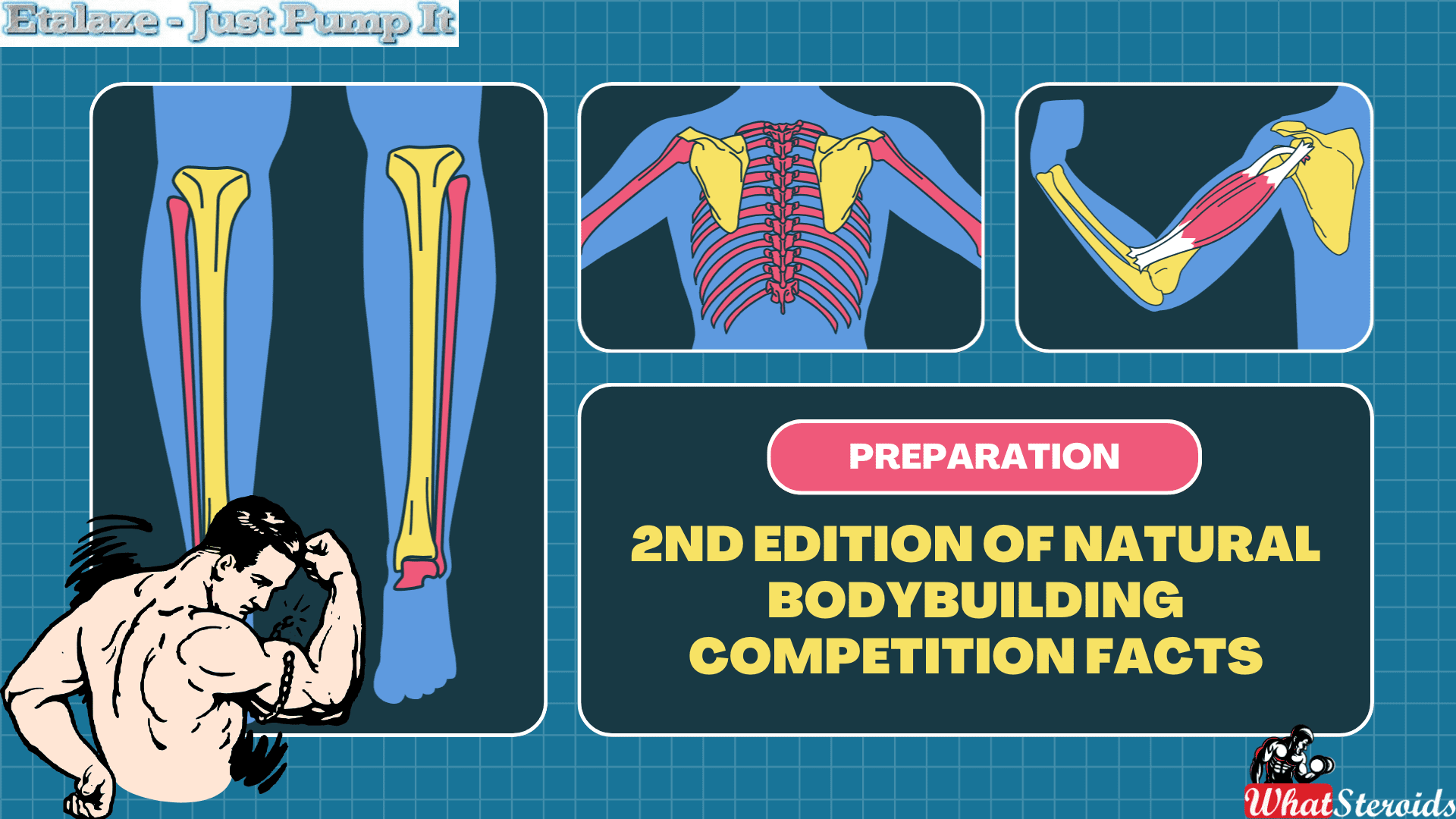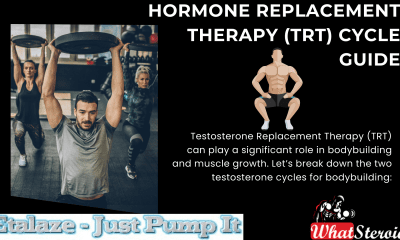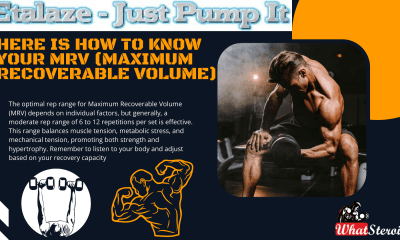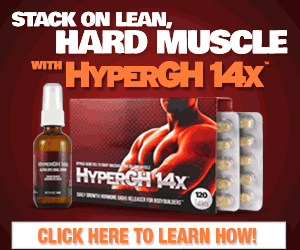Bodybuilding
Training Template by Lift Run Bang
This program is based on the Key Foundations of Weight Training.

( Lift Run Bang Training Template) Written By Trevor Kouritzin
Chemical Engineer, Human Nutrition MSc. Candidate
Coach Paul Carter
It is my spin on Coach Paul Carter's Lift Run Bang (LRB) Training program. The LRB training template is one of the best hypertrophy templates ever developed. I like the principles of the program, but I feel that the program doesn't contain the proper delineation between training modalities for different types of physique display.
For example, physique athletes, bodybuilders, and powerlifters want more muscle, but physique competitors need to approach training differently than bodybuilders and powerlifters.
A physique competitor needs to make his primary focus keeping his waist tight and his physique aesthetic, whereas a powerlifter doesn't care what his form looks like as long as his strength increases.
This program gives you the best of everything. I took the LRB training template and tweaked it for the goals of a men's physique athlete. If you have the physique goals of a male cover model, this is the program you need.

- Base your training around the big basic lifts: squats, deadlifts, overhead pressing, etc.
- Have a progression plan.
- Do some form of conditioning.
- Believe in what you are doing.
But also tailored specifically for a men's physique athlete with daily ab training, daily calf training, and programmed extra work to ensure the physique stays balanced and aesthetic.
The Lift Run Bang Recipe:

- A heavy Light System - You lift heavy for one workout and then lift for reps the next. People always argue whether progressive overload or blood volume training is the best stimulus for muscle hypertrophy. That would like asking which organ is more important; your liver or your heart? You would be dead without either. The LRB template focuses on progressive overload and blood volume training, so you get the best of everything.
- Push / Pull / Legs – This is the most productive workout split for intermediate and advanced lifters. The push/pull/legs split allows you to train each muscle group twice per week, which maximizes muscle protein synthesis, but still allows for enough recovery time between workouts, so you don't overtrain.
- Daily Ab Training – By training abs daily, you will constantly be depleting the glycogen muscles, promoting localized fat loss. New research shows that sport-specific training promotes localized fat loss by increasing blood flow to the area. Take the example of a carpenter who is using his forearms daily. Have you ever seen a carpenter who doesn't have super vascular and jacked forearms? I haven't. Daily ab training is something I have been experimenting with on my clients, and I can tell you anecdotally that it does work.
- Daily Calf Training – Similar to above, calves are an extremely stubborn muscle group. Trying to get your calf muscles to grow is almost the equivalent of trying to get your jaw muscles to grow. If you haven't been blessed with genetically good calves, the only effective method I have found to get them to start growing is training them daily with high repetitions.
Heavy Days:

- The heavy days are for strength progression and progressive overload. That means HEAVY weight and low reps. You should try to add weight to the bar each workout or get an extra rep with the same weight used in the previous session.
- Rest between sets will be 2-3 minutes. The heavy days are all about moving as much weight as possible.
- Train with an external focus on the heavy days. Focus on lifting the weight from A to B rather than the mind-muscle connection.
Light Days:

- The light days are for hypertrophy and strengthening the tendons. That means HIGH reps and forcing a lot of blood into the muscle. You are not trying to kill yourself on the light days. You are trying to strengthen the supportive area by forcing a lot of blood through those joints, tendons, and musculature. Reps are in the 15-30 range.
- Rest between sets is minimal on light days. The goal is to achieve the most significant muscle pump possible to stretch the fascia of muscle cells to stimulate muscle growth.
- Train with an internal focus on the light days. Focus on the mind-muscle contraction and mindfully contracting muscles to move the weight from A to B.
Must Read: How to Choose the Right Weights When Training
Conditioning:
So what is the Lift Run Bang method for getting into good condition? Easy. Steady-state cardio and interval training. It's the rave to overcomplicate conditioning with things like the sled and prowler. I think it's unnecessary.
Why? Because getting into shape is free. You walk outside for your steady-state and run out for your interval training.
Steady State:

I recommend a steady-state first thing in the morning before eating. Sometimes I have to do it in the afternoons or later in the evening because of my schedule, but I find that doing it in the morning makes me feel "good" for the rest of the day. I also would argue that it has a more significant effect on fat loss.
Now I know that the literature shows that timing your cardio does not affect weight loss. However, the literature indicates that cardio increases muscle insulin sensitivity and improves blood glucose management.
I think doing cardio first thing in the morning before eating will promote better blood glucose management throughout the day and improve body composition better than doing cardio later in the day.
Suppose you can't finish it in the morning, that's fine. Just get it in 3-5 times a week.
I generally have some black coffee and then head out for a 25-45 minutes fast-paced walk. I recommend doing this 3-5 times a week. Steady-state is excellent for recovery and improving blood pressure, heart, and joint health. Walking is also great for the mind and overall stress relief.
Interval Training:

I like hill running and 30-40 yard sprints at about 60-70% speed for interval work. I generally do a short warm-up, perform the intervals, a quick cool down, and then some ab work.
Generally, I do hard conditioning twice a week. One day I will make 30-40 yard sprints. The other day I will run the hills. I recommend 10-12 intervals per session.
Must Read: Why Bodybuilders Should Do HIIT (High-Intensity Interval Training)
Training Template:
At the end of every workout:
- Daily ab swelling – 100 lying leg raises and 100 bodyweight crunches
- Daily calf swelling – 100 standing calf raises
Day #1 - Pressing (Chest, Shoulders, Triceps) – Heavy:
Overhead Work - Barbell Variation - Pick One
Standing Press / Seated Press / Press Behind Neck / Push Press - 3 sets of 5 @ same weight
Bench Press – 7 sets @ 5,4,3,2,1,1,1
Assistance Work for shoulders - Pick one
Upright Rows / Db Cleans / Hang Pulls - 5 sets of 8-10
Assistance Work for Triceps - Pick one
Pushdowns / Overhead Extensions / Bench Dips - 5 sets of 15-20
Day #2 - Legs – Heavy:
Squats – 7 sets @ 5,4,3,2,1,1,1
Hacks / Machine Squats - 4 sets @ 6-10
Leg Press - 4 sets @ 10+
Single-Leg Work - 1-legged leg press / 1-legged squats / lunges (any kind) - 4 sets @ 10-20
Standing calf raises/ leg press calf raises - 4 sets @ 10-20
Day #3 - Back - Hamstrings - Biceps - LIGHT:
Pick one - Romanian Stiff Legs / Cleans (hang or power) / Dynamic Romanian Shrugs - 3 sets @ 5 (use the same weight for each set)
Dynamic Romanian Shrugs are when you do a Romanian deadlift, then explode upwards onto the toes into a shrug.
- Lat Pulldowns / Cable Rows / Hammer Row or Machine Rows / Db Rows - 5 sets @ 12-20
- Hyperextensions / Glute Ham Raises / Leg Curls (seated, 1 legged, lying, etc) - 4 sets @ 15-20
- Machine or Db Curls - 3 sets @ 10-15 to a top set
Day #4 - Interval Training and Abs:
5-10 minute warm-up walking at a moderate pace.
Ten sprints (or treadmill sprints). Pick a destination 30-40 yards away. Sprint as fast as you can to the goal. Walk back. Repeat ten times. If making treadmill sprints, walk for 1 minute, Sprint all out for 30 seconds. Repeat ten times.
Must Read: The Benefits of Warm-Up Exercises Before Workout
After the ten intervals, do 5-10 minutes of walking at a moderate pace for a cool down.
Next up is the ab circuit:
3 rounds of tri-set #1 – machine crunch @ 20 reps / cable wood chop @ 10 reps per side / hanging leg raise @ 10
Three rounds of tri-set #2 – weighted plank @ 1 minute / Side oblique v-ups @ 10 reps per side / decline bench lying leg raise @ 20
3 rounds of tri-set #3 – decline bench weighted crunch X 15 / landmine 180s @ 10 per side / barbell ab roll out @ 10 reps
Day #5 - Pressing - Light:
Pick One - Seated Db Press / Standing Db Press / Machine Press - 3 sets @ 12-20 reps
Pick One - Incline Press / Decline Press / Machine Press - 2-3 sets @ 12-20 reps
Shoulder - Side or Bent Laterals - 5-6 sets @ 15-20
Tricep - Pullovers or Pushdowns - 5-6 sets@ 15-20
Day #6 - Legs Light:
Front Squats / Pause Squats – 7 sets @ 5,4,3,2,1,1,1
Leg Extension - 4-5 sets @ 20-30
Adductor/Abductor machine superset - 4-5 sets @ 15-20
1-Legged Movement - Lunges / Speed Skater Squats / 1-Legged Squats - 4 sets @ 20
Seated calf raises- 4 sets @ 20-30
Day #7 - Back HEAVY:
Deadlifts/ From Floor / Blocks / Rack / Elevated / Stiff Legged / Banded – 7 sets @ 5,4,3,2,1,1,1
Pick One - T-Bars / Weighted Chins / Barbell Rows - 5x6-8 to a top set
Good Mornings - 3-4 sets @ 5 (moderate weight) OR...
Leg Curls - 4 sets of 20-30
Some form of a bicep curl - 4-5 sets @ 10-20
Day #8 - Interval Training and Abs:
5-10 minute warm-up walking at a moderate pace.
Ten hill sprints (or treadmill sprints on an incline). If making hill sprints, sprint up the hill and then walk down the mountain. Repeat ten times. If making treadmill sprints, set the treadmill to a 10% incline. Walk for 1 minute, Sprint all out for 30 seconds. Repeat ten times.
After the ten intervals, do 5-10 minutes of walking at a moderate pace for a cool down.
Next Up is The Ab Circuit:
A. 3 round of tri-set #1 – TRX knee tuck-ins @ 20 / kneeling cable crunch @ 20 reps / land mine 180s @ 10 per side
B. 3 rounds of tri-set #2 – Hanging leg raises @ 10 reps / weighted decline bench crunch @ 15 reps / side plank with leg raises @ 15 reps
C. 3 rounds of tri-set #3 – Barbell ab rollout @ ten reps/decline bench lying leg raise @ 20 reps / 4-way front to back, side to side medicine ball twists @ 20 reps
Thanks to: Coach Paul Carter and Trevor for such an excellent article.
Bodybuilding
Mastering Bodybuilding in 2025: Top Fitness Tips for Success

Bodybuilding is more than just a sport; it's a lifestyle that requires dedication, discipline, and a thorough understanding of fitness principles. As the world of fitness continues to evolve, bodybuilders must stay updated with the latest trends, techniques, and scientific advancements to achieve their goals. In 2025, several innovative approaches are redefining bodybuilding. Here are essential fitness tips for bodybuilders to excel this year.
Read More: Bodybuilder Winter Clothing: Staying Warm and Stylish
Embrace Technology-Driven Workouts
In 2025, technology plays a significant role in bodybuilding. Wearable devices, fitness apps, and virtual reality (VR) training are now integral components of an effective workout regimen.
Wearable Devices
Modern wearables track everything from heart rate and sleep patterns to muscle activation and caloric expenditure. Utilize these devices to monitor your progress and make data-driven adjustments to your training and nutrition plans.
Fitness Apps
Leverage fitness apps for customized workout plans, progress tracking, and virtual coaching. Many apps now incorporate artificial intelligence to provide personalized feedback and recommendations.
Virtual Reality Training
VR technology offers immersive workout experiences, allowing bodybuilders to simulate different training environments and scenarios. This can enhance motivation and add variety to your routine.
Focus on Functional Strength
While hypertrophy (muscle growth) remains a primary goal, functional strength is gaining importance. Functional strength training improves overall performance, reduces the risk of injury, and enhances daily activities.
 Check Out Our1 4 Weeks Quality Strength & Lean Muscles
Check Out Our1 4 Weeks Quality Strength & Lean Muscles
Compound Movements
Incorporate compound exercises like squats, deadlifts, and bench presses. These movements engage multiple muscle groups and joints, promoting balanced strength development.
Core Stability
Prioritize exercises that strengthen the core, such as planks, Russian twists, and leg raises. A strong core supports better lifting mechanics and reduces the risk of lower back injuries.
Optimize Nutrition for Muscle Growth and Recovery
Nutrition is the cornerstone of successful bodybuilding. In 2025, the focus is on personalized nutrition plans tailored to individual needs and goals.
Protein Intake
Ensure adequate protein intake to support muscle repair and growth. Aim for 1.6 to 2.2 grams of protein per kilogram of body weight per day, depending on your training intensity and goals.
 Click Here to Buy SynthaTrope By SynthaPharma
Click Here to Buy SynthaTrope By SynthaPharma
Nutrient Timing
Pay attention to nutrient timing to maximize muscle recovery and growth. Consume protein and carbohydrates within 30 minutes post-workout to replenish glycogen stores and kickstart muscle repair.
Supplements
Utilize supplements wisely. Creatine, branched-chain amino acids (BCAAs), and omega-3 fatty acids are popular choices for enhancing performance and recovery.
Prioritize Mental Health and Mindfulness
Mental health is increasingly recognized as a critical component of overall fitness. Incorporating mindfulness practices can improve focus, reduce stress, and enhance performance.
Meditation
Incorporate meditation into your daily routine to reduce stress and improve mental clarity. Mindfulness meditation can enhance your mind-muscle connection during workouts.
Visualization
Use visualization techniques to mentally rehearse your workouts. Visualizing successful lifts and achieving your goals can boost confidence and motivation.
Rest and Recovery
Prioritize rest and recovery to prevent burnout and overtraining. Ensure you get 7-9 hours of sleep per night and incorporate rest days into your training schedule.
Leverage Advanced Training Techniques
Advanced training techniques can help break through plateaus and stimulate muscle growth. In 2025, several methods are gaining popularity among bodybuilders.
Blood Flow Restriction (BFR) Training: BFR involves restricting blood flow to the muscles during low-intensity exercises. This technique can enhance muscle growth and strength without the need for heavy weights.
Eccentric Training: Focus on the eccentric (lowering) phase of exercises. Eccentric training can stimulate greater muscle damage and growth compared to traditional concentric movements.
Periodization: Implement periodization into your training plan. Varying the intensity, volume, and type of exercises can prevent plateaus and ensure continuous progress.
Incorporate Recovery and Mobility Work
Recovery and mobility are essential for preventing injuries and maintaining optimal performance. In 2025, bodybuilders are paying more attention to these aspects of training.
Foam Rolling and Myofascial Release: Use foam rollers and massage balls to release muscle tightness and improve flexibility. Regular myofascial release can reduce soreness and enhance recovery.
Stretching: Incorporate dynamic stretching before workouts and static stretching after workouts. Stretching improves range of motion and prevents muscle imbalances.
Cryotherapy and Hydrotherapy: Explore recovery techniques like cryotherapy (cold therapy) and hydrotherapy (water therapy) to reduce inflammation and accelerate muscle recovery.
Engage in Continuous Learning and Community Building
The fitness industry is constantly evolving, and staying informed is crucial for success. Engage in continuous learning and connect with the bodybuilding community for support and motivation.
Educational Resources: Read books, watch videos, and attend seminars to stay updated on the latest research and trends in bodybuilding.
Community Engagement: Join online forums, social media groups, and local bodybuilding clubs. Sharing experiences and knowledge with fellow bodybuilders can provide valuable insights and encouragement.
Professional Guidance: Consider working with a certified personal trainer or coach. Professional guidance can help you optimize your training and nutrition plans, ensuring you're on the right track.
With your FB Plus subscription or active FB Plus Pass, you now have access to 124 weeks of our most popular workout programs, which typically sell for $10-$30 each. Additionally, our popular 4-week Meal Plan is included. This is on top of the 38 Challenges and Programs that are already available to Plus members.
We've also introduced a new feature that many of you have requested. To assist you in choosing your next program, you can now preview each day of any program from its detail view. This feature lets you see all the included workout videos and content before you schedule it, ensuring you know exactly what to expect.
Conclusion
In 2025, bodybuilding is more than just lifting weights; it's a holistic approach to fitness that encompasses technology, nutrition, mental health, and advanced training techniques. By embracing these fitness tips, bodybuilders can achieve their goals, stay injury-free, and enjoy a fulfilling fitness journey. Remember, consistency and dedication are key to success in bodybuilding. Stay committed, keep learning, and most importantly, have fun on your path to becoming the best version of yourself.
Bodybuilding
Top Video Games for Bodybuilders in 2025

There are several video games that can be great for bodybuilders, combining fitness and fun! Here are some of the best options:
Ring Fit Adventure (Nintendo Switch)
The game uses the Ring-Con and Leg Strap to guide you through various exercises and adventures. It's a fun way to get a full-body workout while playing a game.
Fitness Boxing 2: VR Boxing Remastered (PlayStation VR)
It offers a full-body boxing workout with a variety of punches and combos. It's a great way to improve your fitness while enjoying a virtual boxing experience.
Must Read: Marvel-Inspired Training Clothing on Amazon
Just Dance 2024
This popular dance game gets you moving to the beat with a variety of songs and dance routines. It's a fun way to burn calories and improve your coordination.
Zumba Fitness
Burn It Off (Nintendo Wii): This game offers a fun and energetic Zumba workout, perfect for those who enjoy dancing and want to get a good cardio workout.
Yoga for Beginners
If you're looking for a more relaxing workout, yoga games can help improve flexibility and reduce stress. Many of these games offer guided yoga sessions that you can follow along with.
Gym Tycoon
This game lets you build and manage your own gym, complete with various workout equipment and fitness classes. It's a great way to learn about different exercises and how to create effective workout routines.
The Sims 4: Fitness Stuff Pack
This expansion pack for The Sims 4 adds fitness equipment and activities to the game, allowing you to improve your character's fitness and join the athlete career.
Grand Theft Auto: San Andreas
While not a traditional fitness game, this classic game includes bodybuilding activities that can help your character gain muscle and improve fitness.
Knockout Home Fitness (Nintendo Switch)
This game offers a variety of boxing workouts that can help improve your strength and endurance.
Gym Simulator 24 (PC)
In this simulation game, you can build and manage your own fitness empire, creating workout routines and managing gym equipment.
Let's Get Fit (Nintendo Switch)
This game focuses on pure workouts, allowing you to set programs and follow along with digital trainers for a customized fitness experience.
Beat Saber (VR)
A popular VR game where you slash blocks to the beat of the music, providing an intense full-body workout.
Synth Riders (PlayStation VR)
This game combines freestyle dance and fitness, offering high-tempo tracks and multiplayer modes for a fun and energetic workout.
Yoga Master (PlayStation)
Designed by professional yoga coaches, this game offers a variety of yoga lessons and poses to improve flexibility and reduce stress.
Les Mills Bodycombat (PlayStation VR)
A martial arts-inspired workout game with a range of workout plans and coaching to keep you motivated.
OhShape Ultimate (PlayStation VR)
This game provides a full-body cardio workout with six sessions and two difficulty levels, designed to engage every part of your body.
These games offer a mix of cardio, strength, and flexibility workouts, making them great additions to your fitness routine.
Related Article: Supplemental Breast Milk for Bodybuilders
Bodybuilding
2nd Edition of Natural Bodybuilding Competition Facts

Natural bodybuilding competitions are designed to promote and celebrate athletes who build their physiques without the use of performance-enhancing drugs. These events emphasize fair play, health, and the natural development of muscle mass and definition.
The second edition of natural bodybuilding competitions has gained momentum globally, particularly focusing on drug-free athletes. These competitions are hosted by various organizations like the INBA/PNBA (International Natural Bodybuilding Association/Professional Natural Bodybuilding Association) and OCB (Organization of Competitive Bodybuilders).
In 2024, several notable events have been planned, including the INBA Natural Universe and INBA World Cup, both of which emphasize natural bodybuilding through rigorous drug testing policies. These events aim to showcase competitors who adhere to strict drug-free protocols, and winners often earn pro cards allowing them to compete in higher-level professional competitions.
These competitions focus on categories like men's bodybuilding, classic physique, and women's figure and bikini, among others. Athletes undergo polygraph and urine tests to ensure compliance with natural bodybuilding standards. The winners often receive medals, trophies, or pro status
-

 Steroids2 years ago
Steroids2 years agoVOX Testing: Why Bodybuilders Must Have It Tested Regularly
-

 Steroids2 years ago
Steroids2 years agoShavers and Other Body Grooming Equipment for Bodybuilders In 2023
-

 Steroids2 years ago
Steroids2 years agoChatGPT and Other Avenues to Find Great Bodybuilding Coaches
-

 Steroids2 years ago
Steroids2 years agoBest Oil Recommendations Before Competition for Subtle Shimmer
-

 Steroids2 years ago
Steroids2 years agoPowerlifting Vs Power Building: Find Out the Big Difference and When to Shift Between the Two
-

 Nutrition1 year ago
Nutrition1 year agoEverything Nutritional Food: What’s Too Much Or Too Little
-

 Bodybuilding Products12 months ago
Bodybuilding Products12 months agoTelmisartan In Bodybuilding: An Expert’s Advice
-

 Anabolic Steroids1 year ago
Anabolic Steroids1 year agoLegality of Anabolic Steroids In Latin America
-

 Beginners2 years ago
Beginners2 years agoTren Cycle for Beginners
-

 Bodybuilding1 year ago
Bodybuilding1 year agoList of FDA-Approved Peptides
-

 Bodybuilding2 years ago
Bodybuilding2 years agoCompetition Prep Cycle for Pro Bodybuilders
-

 Bodybuilding1 year ago
Bodybuilding1 year agoChia Seeds in A Bodybuilder’s Diet: An Expert’s Advice
-

 Anabolic Steroids11 months ago
Anabolic Steroids11 months agoHow Much Do You Know About B-AET? A Fat Burner You’ve Been Missing
-

 Bodybuilding7 months ago
Bodybuilding7 months agoPrimal Movements: Our Ultimate Guide for Maximum Results
-

 Steroids11 months ago
Steroids11 months agoAnadrol Cycle: Benefits, Doses, Alternatives, etc.
-

 Anabolic Steroids8 months ago
Anabolic Steroids8 months agoJoint Stiffness: How to Manage It While on AAS
-

 Product Reviews10 months ago
Product Reviews10 months agoTop Vitamins for Skin Health
-

 Steroids9 months ago
Steroids9 months agoOmnitope (Oxytocin)
-

 Bodybuilding1 year ago
Bodybuilding1 year agoHow Much Is Too Much Cardio? Understanding Heart Rate Zones
-

 Bodybuilding8 months ago
Bodybuilding8 months agoHow Effective is Bone Broth for Recovery?
-

 Steroids10 months ago
Steroids10 months agoMajor Bodybuilding Peptides Explained
-

 Bodybuilding9 months ago
Bodybuilding9 months agoHormone Replacement Therapy (TRT) Cycle Guide
-

 Steroids8 months ago
Steroids8 months agoSleeping Positions for Effective Muscle Recovery
-

 Anabolic Steroids1 year ago
Anabolic Steroids1 year agoStart The New Year Strong With These Tips
-

 Bodybuilding10 months ago
Bodybuilding10 months agoHere Is How To know Your MRV (Maximum Recoverable Volume)








 Click here to buy 1-Test Cyp/DHB 100 by Dragon Pharma
Click here to buy 1-Test Cyp/DHB 100 by Dragon Pharma









